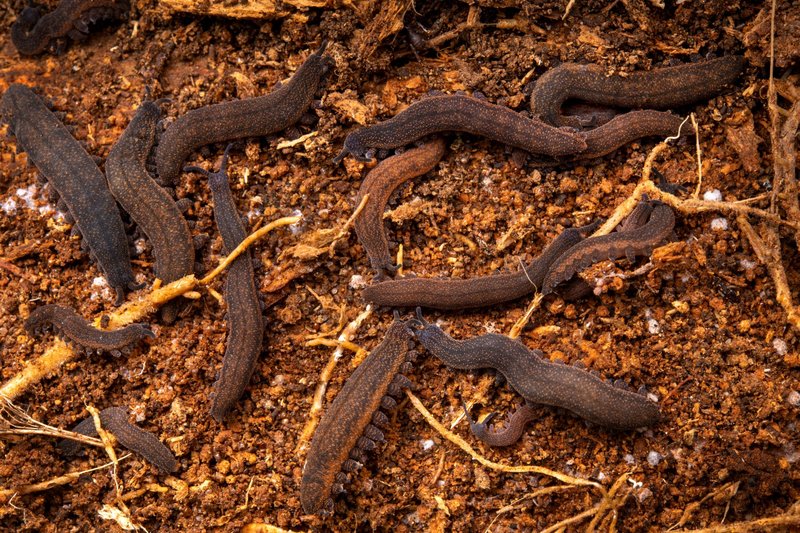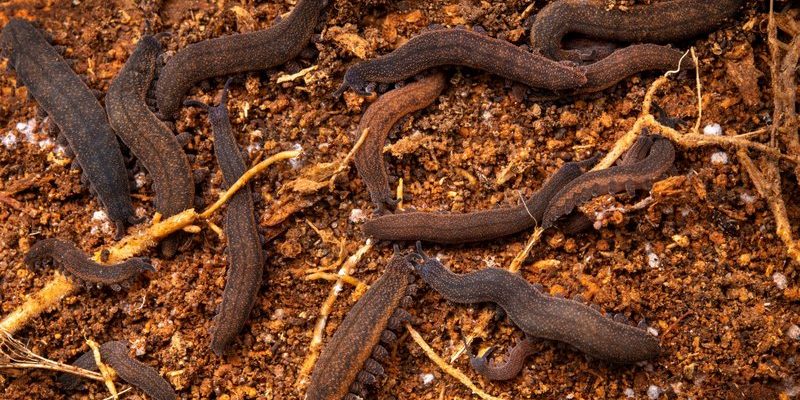
Just like a fish can’t survive on land, velvet worms need moisture to live. But what happens when their home gets dry? Can they adapt? Or are they destined to face the harsh reality of a desiccated world? Today, we’re diving into the habitat preferences of velvet worms, how they cope with moisture loss, and what their survival strategies are in less-than-friendly environments.
What Are Velvet Worms?
Velvet worms, or *Onychophora*, are fascinating creatures that fall somewhere between insects and annelids like earthworms. They boast soft, segmented bodies covered in a unique layer of cuticle, giving them that velvety texture. Imagine a cross between a slug and a caterpillar, with a dash of charm thrown in!
These little guys can grow up to several inches long and can be found in a variety of shapes and colors. They primarily reside in tropical and subtropical regions, where humidity is high. Their bodies are finely tuned to absorb moisture from their environment, which is crucial for their survival. You might not see them often because they tend to hide under leaf litter or logs, where it’s damp and cool.
Why Do Velvet Worms Need Moisture?
Here’s the thing: velvet worms are quite sensitive to dehydration. They have a unique respiratory system that relies on small openings called spiracles located along their body. These spiracles allow for gas exchange, but they also make them vulnerable to moisture loss. To put it simply, without moisture in their environment, velvet worms can dry out quickly, like a sponge left in the sun.
Maintaining hydration is critical for their survival. In the wild, the high humidity of rainforests provides the perfect conditions for them to thrive. If you think about it, it’s a bit like how we feel when it’s hot outside; we need water to stay cool and hydrated. Similarly, velvet worms need moisture to keep their cells functioning and to avoid the dangers of dehydration.
The Impact of Dry Conditions
Now, you might be asking, what happens when velvet worms find themselves in dry climates? The truth is, dry conditions can be deadly for them. Prolonged exposure to low humidity can lead to desiccation, which is a fancy way of saying they could dry out and die.
Imagine being in a desert with no water—pretty uncomfortable, right? Velvet worms experience something similar when they’re in arid environments. Their bodies can swell, and they can lose vital water quickly. Although some organisms have developed ways to withstand these conditions, velvet worms haven’t mastered that art. That sets them back in the survival game.
Can Velvet Worms Adapt to Dry Climates?
When it comes to survival, adaptability is key. While velvet worms are not known for thriving in dry conditions, they do possess some fascinating survival strategies. For instance, when faced with a lack of moisture, they can enter a state of reduced activity. It’s similar to how a bear hibernates—slowing down to conserve energy while waiting for better conditions.
Some studies suggest that during drier periods, velvet worms may tuck themselves into hidden crevices or underground burrows, where moisture levels are more stable. This behavior is quite clever as it allows them to escape the harsh environment above while keeping their moisture content intact.
Velvet Worms and Climate Change
With rising global temperatures and shifting climates, you might wonder how velvet worms will fare. As their habitats become less hospitable, these little creatures face serious challenges. Deforestation and habitat destruction can exacerbate the effects of climate change, leading to even less moisture and more extreme temperature fluctuations.
Unfortunately, velvet worms are not very mobile, so relocating to more suitable environments isn’t a realistic option for them. If their specialized habitats disappear, it could have dire consequences for their populations. This makes understanding their needs and conservation efforts even more crucial than ever.
So, can velvet worms survive in dry climates? The answer is a cautious no. While they have some clever tricks up their sleeves to cope with moisture loss, they aren’t built for arid conditions. Just like you wouldn’t want to go camping in the desert without enough water, velvet worms don’t last long without their beloved humidity.
Their delicate balance with their environment makes them incredibly interesting yet vulnerable. As we continue to explore how climate change affects various species, velvet worms remain a reminder of how interconnected life is. Treating our ecosystems kindly ensures that these bizarre and fascinating creatures can thrive for generations to come. So next time you think about the little things that make up our world, remember the velvet worm—it’s a tiny creature with a big story!

